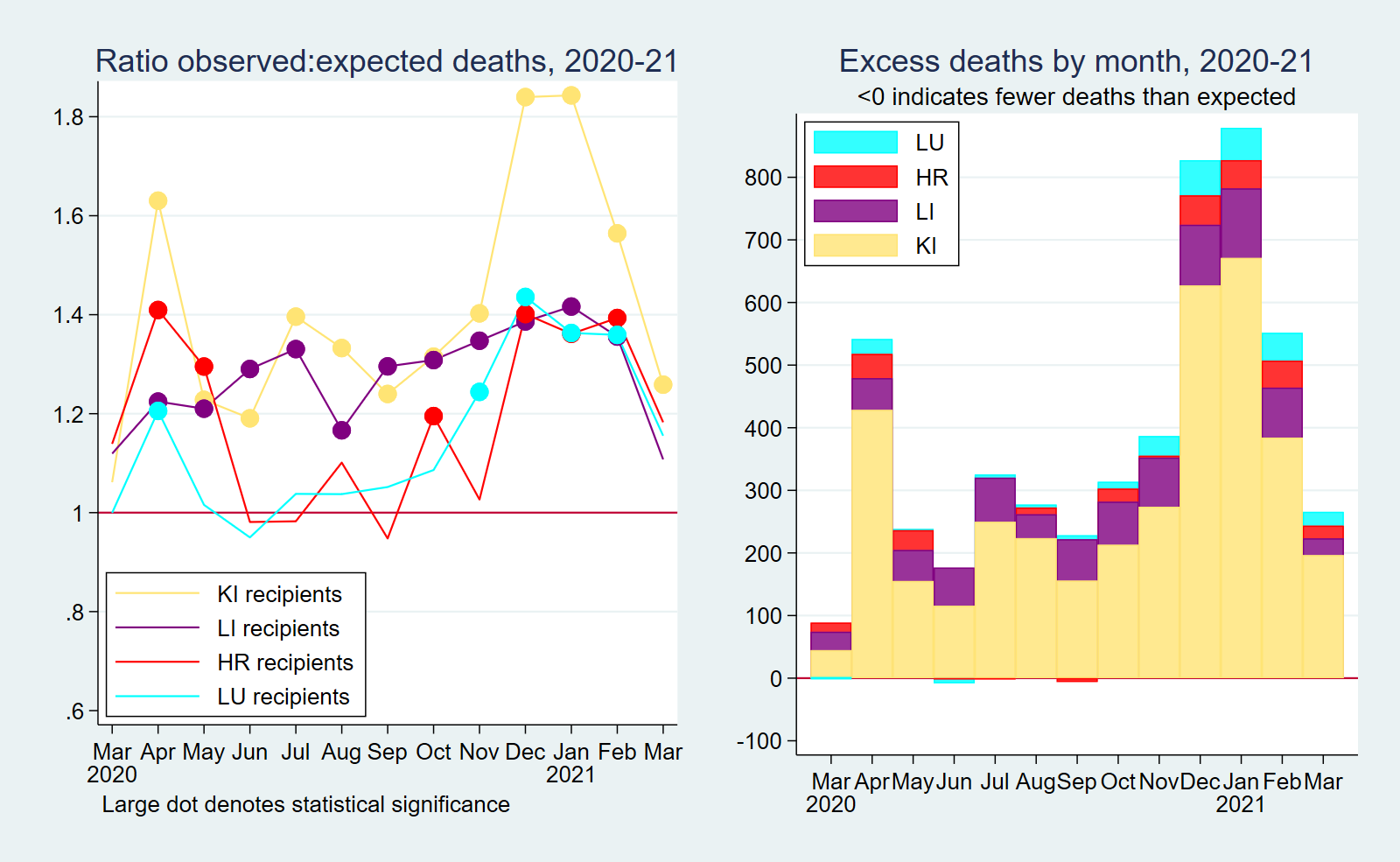Quantifying excess deaths among solid organ transplant recipients in the COVID-19 era
Allan Massie1, William A. Werbel2, Robin K. Avery2, Teresa PYC Chiang3, Jon J. Snyder4, Dorry L. Segev1,4.
1Surgery, NYU Langone Transplant Institute, New York, NY, United States; 2Medicine, Johns Hopkins School of Medicine, Baltimore, MD, United States; 3Surgery, Johns Hopkins School of Medicine, Baltimore, MD, United States; 4Scientific Registry of Transplant Recipients, Minneapolis, MN, United States
Introduction: Estimating the total COVID-19 mortality burden of solid organ transplant recipients (SOTRs), both directly through COVID-19 infection and indirectly through other impacts on the healthcare system and society, is critical for understanding the disease's impact on the SOTR population.
Methods: Using national registry data from the United States, we modeled expected mortality risk per month pre-COVID (1/2015-2/2020) for kidney/liver/heart/lung SOTRs, and compared monthly COVID-era deaths (3/2020-3/2021) to expected rates, overall and among subgroups. Deaths above expected rates were designated "excess deaths".
Results: Between 3/2020-3/2021, there were 3739/827/265/252 excess deaths among kidney/liver/heart/lung SOTRs, respectively, representing a 41.2%/27.4%/18.5%/15.0% increase above expected deaths (Figure 1). 93.0% of excess deaths occurred in patients age≥50. The observed:expected ratio was highest among Hispanic SOTRs (1.82) and lowest among White SOTRs (1.20); 56.0% of excess deaths occurred among Black or Hispanic SOTRs. 64.7% of excess deaths occurred among patients who had survived ≥5 years post-transplant. Excess deaths peaked January 2021. The geographic and temporal distribution of excess deaths broadly mirrored COVID-19 incidence (Figure 2).
Conclusion: COVID-19 likely caused over 5000 excess deaths among SOTRs in the US in a 13-month period, representing 1 in 75 SOTRs and a substantial proportion of all deaths among SOTRs during this time. SOTRs will remain at elevated mortality risk until the COVID-19 pandemic can be controlled.


